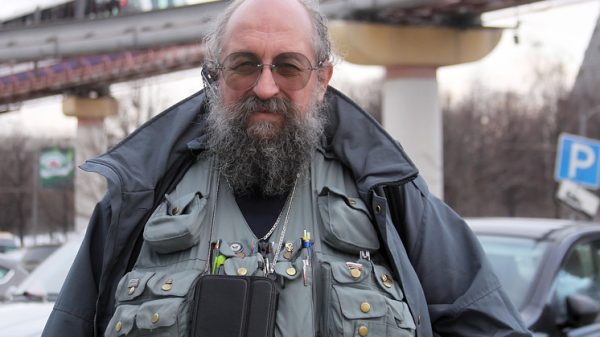He had tossed and turned all night. When he finally got out of bed at 4am, Anand Kumar realised his parents had too.
The 17-year-old was confident he had worked hard for his exam – the joint entrance exam (JEE), which is the ticket to India’s finest engineering institutions – but the anxiety was undeniable. Huddled together in their living room last week, the family sat refreshing the JEE homepage repeatedly on two smartphones as they waited for the results to be uploaded.
The site crashed several times before Anand could check his ranking – 369 out of the 150,000 students who sat the exam across India. Elated, he touched his father’s feet and held his mother tight, as tears streamed down her cheeks.
“I consider myself lucky; many students from Patwatoli could not make it to the exam centre due to the pandemic,” says Anand, who enrolled in a coaching centre in Delhi to prepare. Dressed in a clean blue shirt, he is preparing for the media frenzy that will descend on the village by evening.
His parents, who are both casual daily workers at a power loom in the neighbourhood, had taken the day off. Wearing the village’s more usual attire, a lungi and vest, his father hovered. It was an important day for Deo Kumar, who himself dropped out of school at primary level. “I am happy that my son will be able to have a life I could not have even imagined,” he says, before his voice was drowned in the clatter of the looms as the working day began.
My son will be able to have a life I could not have even imagined
Deo Kumar
Anand is among 16 students from Patwatoli, a village in Bihar’s Gaya district, who have done well in the JEE this year. In the last two decades, almost 250 boys and girls from this small village have cracked the JEE to make it to the coveted Indian Institutes of Technology (IITs). For a village of fewer than 1,500 households, the number is unusually high, even considering that more than half of the admissions are sought via reservation – an affirmative action process for castes that have historically been discriminated against. Every family in Patwatoli has someone who is either a student or a graduate of IIT.
The young men and women from this community of weavers pull off this feat against remarkable odds. Almost every other house in Patwatoli also serves as a weaving workshop. Most families make bedsheets and the traditional Indian towel, gamucha, either as small businesspeople or daily wage labourers, with slender profit margins that are barely enough for survival. Many take loans or spend their life savings to send their children to special coaching classes to prepare for the JEE. Navneet Kumar spent two years in Kota, 621 miles (1,000km) away from home. Tushar Kumar secured a scholarship at a popular coaching institute in Delhi.
Only a handful of students own a laptop. But acing one of India’s most competitive academic tests remains the best way to leave a life of poverty. A graduate from one of the technology institutes can expect a salary upwards of around £16,000 – 12 times India’s per capita income. Several engineers from Patwatoli are employed with top Indian, US, UK and international companies.
“The IIT boom hit Patwatoli in the early 2000s,” says Dev Narayan, 26, an IIT graduate now working in Singapore. “Until then, there were no proper schools here, no good college nearby and nil job prospects. Girls were rarely literate, boys dropped out after class 10. Even as JEE coaching centres mushroomed across India, Patwatoli had never heard of IIT.”
The pioneer of Patwatoli’s engineering success was its first IIT graduate, Jeetender Prasad who has legendary status in the villagers’ stories.
“We don’t know what prompted him to attempt the exam … it was in the early 1990s. He lives in the US now. But his success spawned our common goal, which is like a movement,” says Sushish Kumar, one of the top scorers in the JEE of 2014.
In 1999, when seven out of 16 boys secured a spot in IIT, it set Patwatoli on a path towards change. “We realised it’s not difficult to crack JEE, and we wanted to help others,” says Vijay Kumar, 39.
We realised it’s not difficult to crack the JEE [exam] and we wanted to help others
Vijay Kumar, IIT graduate
When the students returned home for the summer in 2000, they visited every school in the district to announce a talent search exam. It tested children on maths and science and picked youngsters to train for the JEE through counselling and guidance otherwise unavailable in a village without internet access. “To laud the winners, we invited the parents on stage, which encouraged the parents to educate their children,” Vijay Kumar adds.
The efforts by him and his friends were soon formalised as Navprayas, a student-run organisation that remains at the heart of educational efforts in Patwatoli. Every year, during the summer break, undergraduate IIT students volunteer to help students with maths and science.
How renamed streets in Mumbai’s slums are encouraging children to study
Read more
The possibilities have also empowered women in the village. Where once child marriage was the norm and girls dropped out of school, in the past five years three women have won places at IIT and several others are at prestigious engineering institutes. This year, Shilpa Kumari and Seema Kumari received promising scores.
Saloni Kumari, 21, says things are changing, albeit slowly. “If 10 years ago women were getting married at 16, today, some are being allowed to complete their graduation and work a few years before tying the knot,” says the second-year engineering student. The daughter of a labourer, she says it took some convincing for her father to enrol her for the coaching classes, but he did, spending £65 a month when the total household income rarely exceeds £105 a month.
We produce world-class professionals, but we do not have world-class schools, medical facilities or transport
Keshar Prasad
The IIT dream is helping push the traditional weaving business into further decline. “The earnings do not match the hard labour needed from every member of the family,” says Vishal Kumar, a recent graduate from IIT Bombay, who worked at the loom four hours a day as a schoolboy.
“We produce world-class professionals, but we do not have world-class schools, medical facilities or transport,” says Keshar Prasad, a 33-year-old IIT graduate who lives in Singapore.
Like many others, Anand was driven by an ambition for a life outside Patwatoli. “Ten years ago, my father invested all his savings into purchasing a loom. But profits dwindled and he sold it off. Both my parents took up daily wage work. I don’t want to live this life of labour and neither do I want them to suffer. I see IIT as my ticket out,” he says.




















































Свежие комментарии